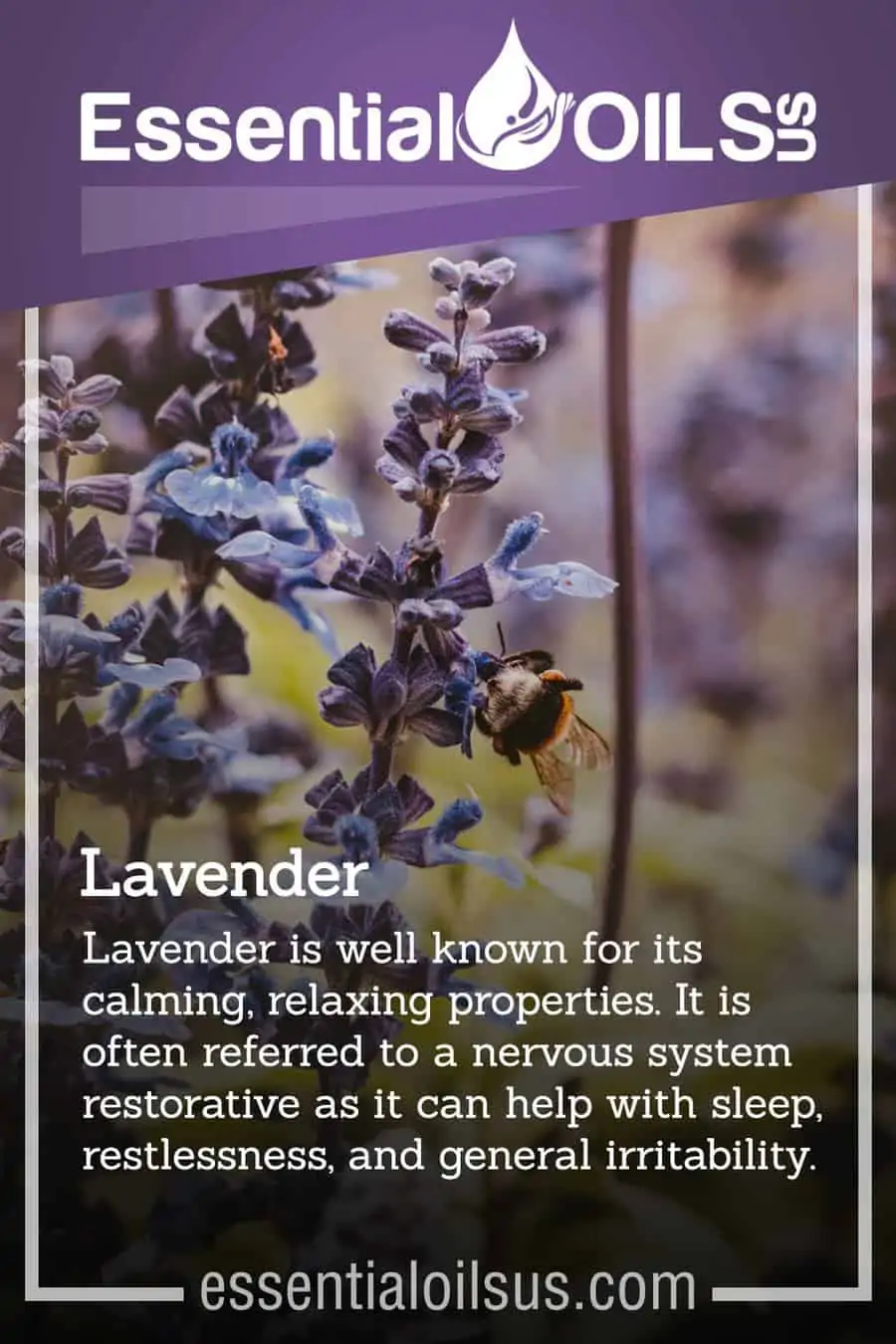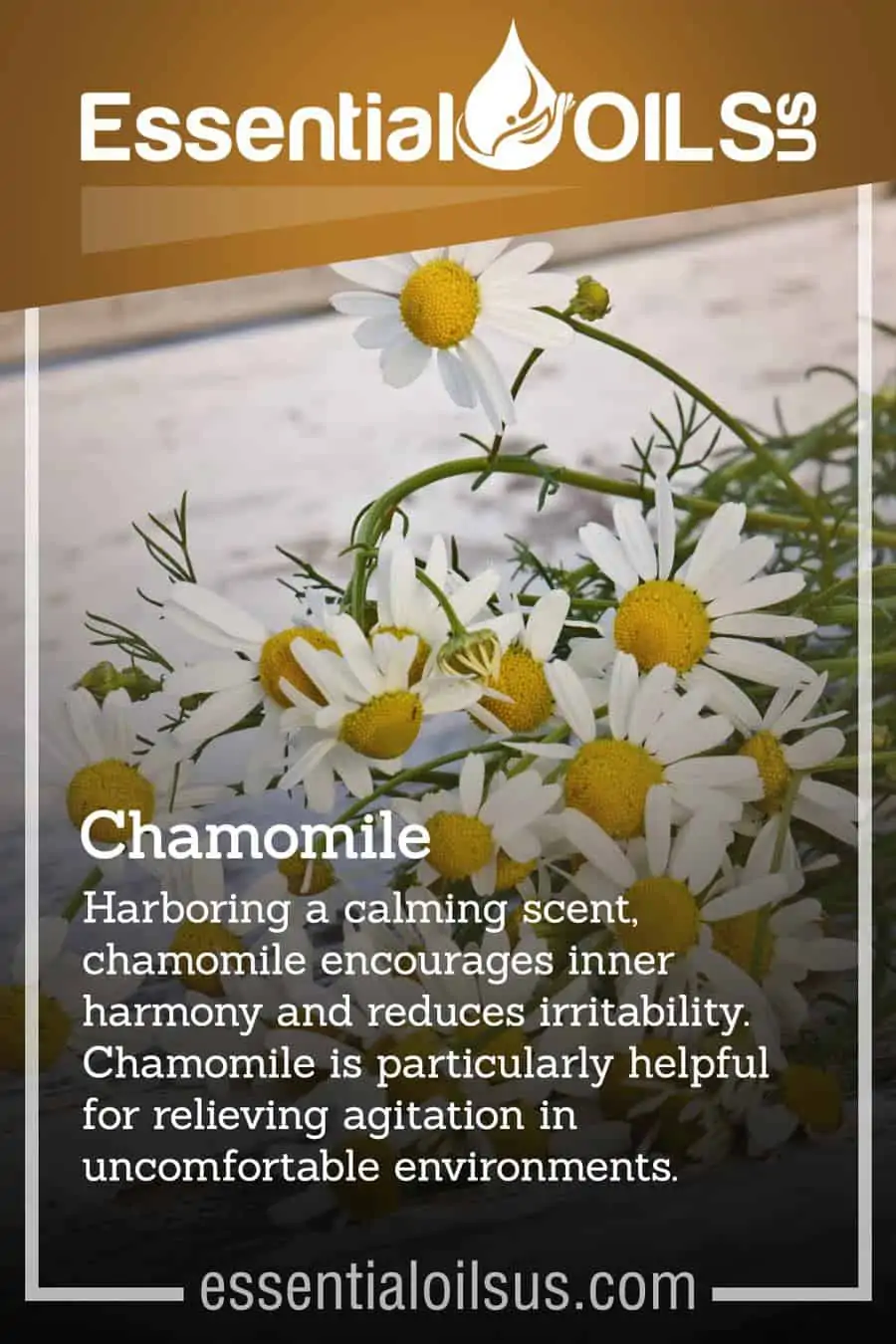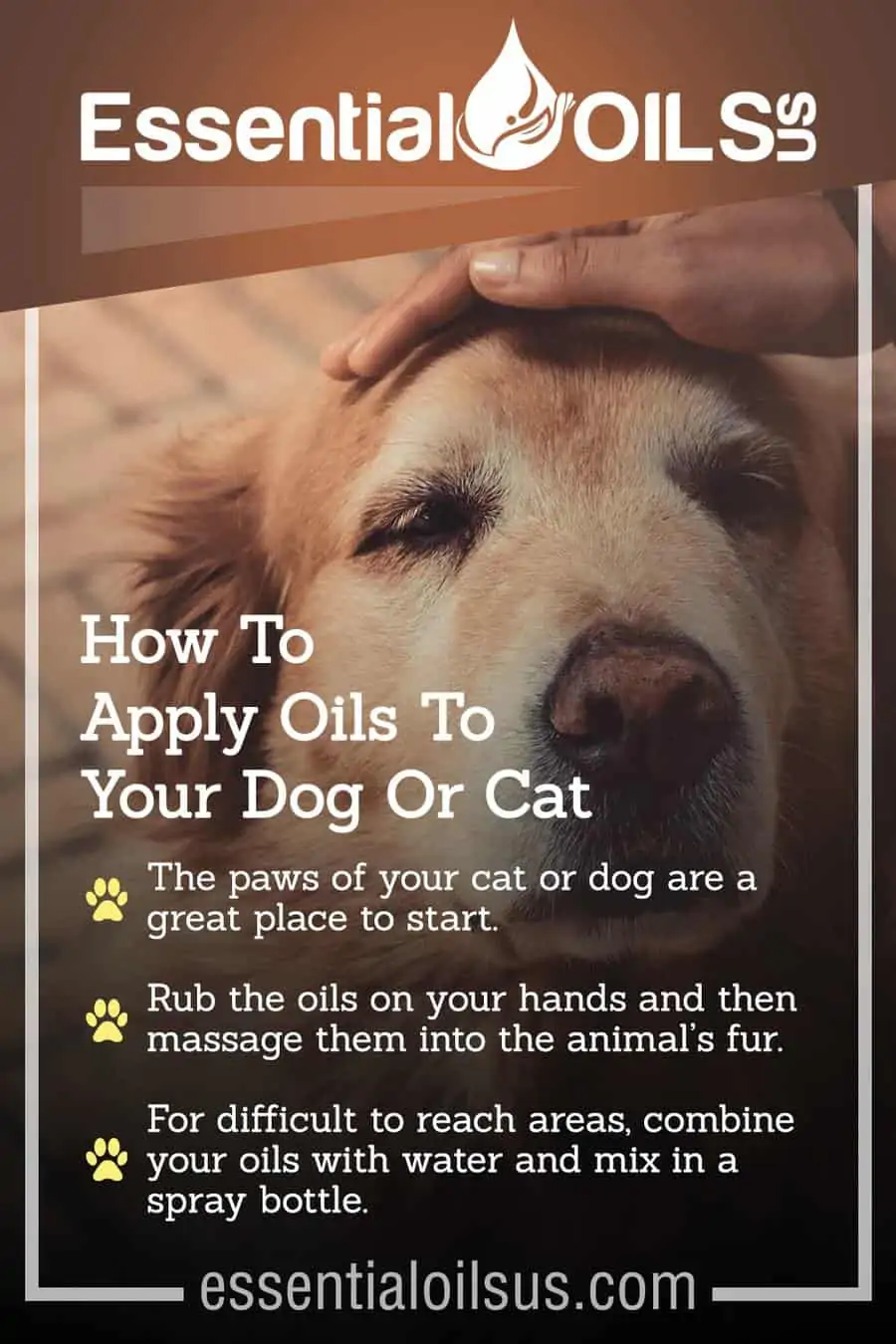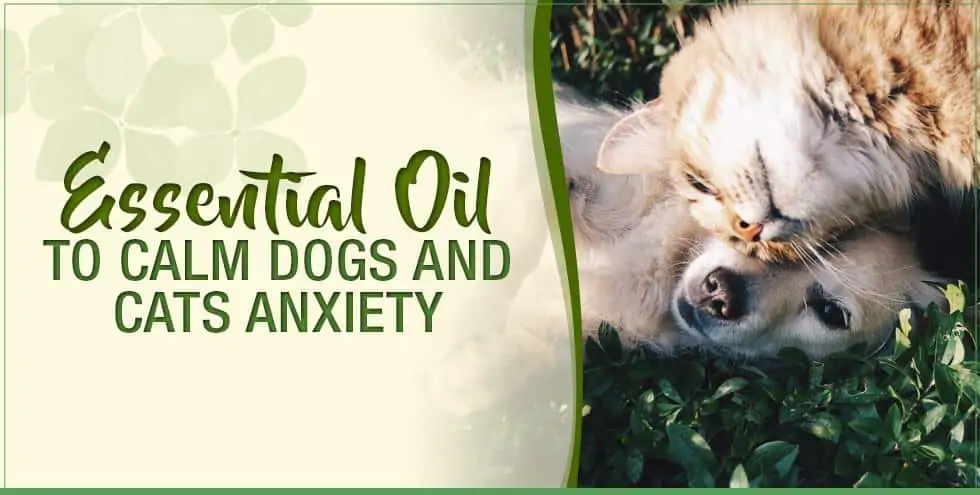You may have plenty of experience applying essential oils. Diffusing them throughout your home, applying them topically to relieve anxiety or the common cold, and on and on.
But aromatherapy can also improve the lives of your pets. In this article, we’ll outline how essential oils can calm dogs and cats, and what to consider before applying.
Before detailing which oils are best for easing pet anxiety and restlessness, consider the following how-to’s and what-not’s.
[amazon box=”B07R96L62L”]
Are Essential Oils Safe For Pets?
Before using essential oils to ease the anxiety of your cat or dog, it’s important to take the necessary precautions. If you have any concerns, we always recommend speaking to your veterinarian first.
Generally speaking, essential oils are safe to use on animals. But not all essential oils are safe for pets. It’s important to know what you should or should not do when applying oils to your dog or cat.

Here are a few preliminary suggestions:
- When applying topically, dilute your oil heavily and start by using moderately (this is especially important for cats).
- No one animal is alike, so observe how your pet responds by applying small portions of oil at a time.
- Avoid getting any oil in your pet’s eyes, as this can cause discomfort and/or long-term damage.
- Don’t use oils that are high-phenol (i.e. thyme and oregano) on any type of animal.
- Take extra precautions when using essential oils with your cat. Avoid the following oils: Basil, cinnamon, clove, fennel, melaleuca, peppermint, oregano, thyme, wintergreen, and any citrus oil.
- Use a quality essential oil brand that does not contain chemicals
[amazon box=”B07RRJKRNW”]Disclosure: We are not physicians, so if you have reservations about using essential oils on your pet, we recommend consulting with your veterinarian.
Best Pet Oils for Anxiety and Restlessness
Just like every human is different, every animal is different. You might find lavender to be a great sedative to apply before going to bed. Meanwhile, for some people so-called “sedative” oils can have a reverse effect. The same goes for your cat or dog.
You don’t really know what works, until you test it. That being said, here are a few oils that can work well for calming your pet.
1. Lavender
Lavender is well known for its calming, relaxing properties. It is often referred to a nervous system restorative as it can help with sleep, restlessness, and general irritability.

2. Ylang ylang
Ylang ylang offers a sweet combination of uplifting and calming effects. Similar to lavender, it has sedative properties that can help with sleeplessness.

3. Bergamot
Bergamot has a distinct floral aroma and can relieve stress without depleting energy and creating lethargy. In fact, one study concluded that bergamot oil greatly reduced corticosterone response to stress in rats.

4. Chamomile
Harboring a calming scent, chamomile encourages inner harmony and reduces irritability. Chamomile is particularly helpful for relieving agitation in uncomfortable environments.

How to Apply Oils to Your Dog or Cat
Before dousing your cat or dog in essential oils, there are some things to consider. The first step of advice is to start slow.
First introduce them to these powerful aromas so they can get comfortable with the scents. You can start by:
- Wearing oils around your pet. Hold them after applying to see how they respond to the aroma.
- Diffuse your oils in a room where they typically hang out.

Next, you’ll want to determine the amount of oil you can apply to your dog or cat. This can vary, as the animal’s size determines how much you should apply. Here are a some guidelines:
- For cats and smaller-sized dogs, use two to four drops and dilute with 80 percent carrier oil (i.e. for every one drop of oil, dilute with four to five drops of jojoba, coconut, or the carrier oil of your choice).
- For large dogs, use three to five drops and dilute with 70 percent carrier oil. Note that dilution might not be necessary, but it’s always best to first test things out by diluting more rather than less.
Now, how to apply oils to your pets:
- The paws of your cat or dog are a great place to start.
- Rub the oils on your hands and then massage them into the animal’s fur.
- For difficult to reach areas, combine your oils with water and mix in a spray bottle.


